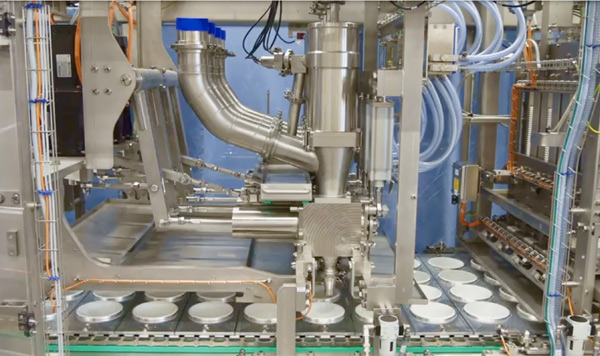
Faced with excessive product giveaway, a global cookie dough producer adopted Waldner’s Compensation Cylinder system to achieve a more precise, cost-effective filling. The switch led to significant waste reduction and stronger return on investment.
Striking the perfect balance of ingredients for smooth, delicious cookie dough isn’t the only challenge manufacturers face when producing this classic American treat. Its thick, dense texture makes packaging more complex than for thinner products like yogurt or jam. Standard piston fillers can’t handle the consistency, while twin-screw pump systems—commonly used in the industry—address the filling issue but often at the cost of excessive product giveaway. So, how can the process be made more efficient and cost-effective?
After years of reporting overfilled tubs, one multinational cookie dough manufacturer began searching for an alternative—one that would increase filling precision, minimize waste and improve profit margins. Hot fillers were ruled out due to the presence of chocolate chips in the dough, which cannot be melted during the process. Ideally, the solution would be based on controlling the product’s physical volume, rather than filling time, as is the case with twin-screw pump technology.
“This (overfilling) was an important issue for them because cookie dough is a relatively expensive product, so even small amounts of overfill can significantly impact profitability”, says Matt Gwin, Product Manager at Waldner North America (WNA). “From our first conversation, it was clear that Waldner’s Compensation Cylinder solution was the right fit for this application. We already work with customers producing similarly thick food products—like butter, peanut butter, bread dough and whipped cream cheese—who can’t use hot fillers either, and they’ve been pleased with the results.”
Gwin explains that the compensation cylinder receives the food product pumped from a reservoir and then, under high pressure, dispenses it into tubs through pistons. This approach provides precise control over the volume of product that goes into each container, solving the overfill issue and improving overall cost-efficiency.
“Because our food packaging systems are tailored to our customers’ needs, each machine is custom-built to provide the best possible solution,” he adds. “The number of compensation cylinders and pistons in a system will vary depending on the type of product, the number of lanes on the machine and other specific factors that our engineers in Germany carefully evaluate and recommend.”
The transition to Waldner’s Compensation Cylinder solution not only brought measurable savings but also ensured greater consistency in product quality and portioning. By nearly eliminating costly overfill and adapting the equipment to the product’s specific characteristics, the cookie dough manufacturer gained better control, higher efficiency and a stronger return on investment—without compromising the quality consumers expect.
For more information, please contact: